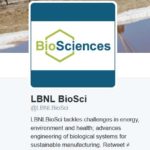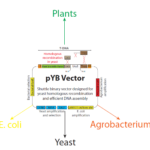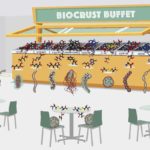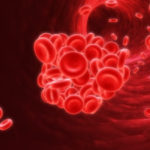 The Biosciences Area launched its Twitter account one year ago. @LBNLBioSci has served as a tool to disseminate the Area’s achievements in energy, environment and health, and has so far attracted 409 followers. To celebrate the one year anniversary, the Biosciences communications team has released a listicle on seven of the Area’s bacterial, fungal and microbial discoveries. Read the listicle here and follow @LBNLBioSci.
The Biosciences Area launched its Twitter account one year ago. @LBNLBioSci has served as a tool to disseminate the Area’s achievements in energy, environment and health, and has so far attracted 409 followers. To celebrate the one year anniversary, the Biosciences communications team has released a listicle on seven of the Area’s bacterial, fungal and microbial discoveries. Read the listicle here and follow @LBNLBioSci.
Out for Blood: New Model Shows Promise for Personalized, Precision Transfusions for Trauma Patients
After trauma injury, some patients develop acute traumatic coagulopathy (ATC), a biological response with increased bleeding, morbidity and mortality. This condition is difficult to diagnose in real-time because relevant laboratory tests take hours and the coagulation mechanisms following injury are not well understood, creating further problems when patients are transfused with massive amounts of untargeted blood products. Mortality is 40 to 70% in the best trauma centers. Current models are unsuited for trauma coagulation or take days to run.
Amor Menezes and Adam Arkin of the Environmental Genomics & Systems Biology Division collaborated with clinicians to develop a simple, fast trauma coagulation model using control theory, published this week in Science Translational Medicine, which can personalize the treatment of severely injured patients with ATC from only laboratory measurements that take a few minutes. Using this model, the authors accurately predicted an hour-long laboratory test, calculated patient-specific transfusion requirements, and demonstrated in vitro that a driver of coagulation in these patients could be controlled as calculated. This ability to quickly predict and leverage accurate individualized information could be key to future treatment of patients with ATC.
Compact CRISPR Systems Found in Some of World’s Smallest Microbes
 Berkeley scientists — including Biosciences’s Jillian Banfield (secondary affiliation with the Environmental Genomics & System Biology Division) and Jennifer Doudna (Molecular Biophysics & Integrated Bioimaging Division) — have discovered simple CRISPR systems similar to CRISPR-Cas9 — a gene-editing tool that has revolutionized biology — in previously unexplored bacteria that have eluded efforts to grow them in the laboratory. Read more at Berkeley News.
Berkeley scientists — including Biosciences’s Jillian Banfield (secondary affiliation with the Environmental Genomics & System Biology Division) and Jennifer Doudna (Molecular Biophysics & Integrated Bioimaging Division) — have discovered simple CRISPR systems similar to CRISPR-Cas9 — a gene-editing tool that has revolutionized biology — in previously unexplored bacteria that have eluded efforts to grow them in the laboratory. Read more at Berkeley News.
JBEI’s Henrik Scheller Awarded 2016 Kaj Linderstrøm-Lang Prize
The award acknowledges JBEI’s VP of Feedstocks for his achievements in enzyme identification and characterization involved in synthesis and modification of the plant cell wall.
Carlsberg Foundation and the Carlsberg Research Laboratory hosted its annual awards celebration on November 29. A record number of four awards were handed out this year to commemorate the Laboratory’s 140th anniversary. The Carlsberg Forum series reflects the strong link between science and business. Each year, the Kaj Linderstrøm-Lang awards are given to prominent scientists for their achievements within biochemistry or physiology, the fields of science in which Kaj Linderstrøm-Lang, a professor at Carlsberg Research Laboratory in the period 1939-1959, distinguished himself as a pioneer.
This year, Professor Henrik V. Scheller, Vice President of Feedstocks at the Joint BioEnergy Institute (Berkeley Lab) and Professor Geoff Fincher, School of Agriculture, Food & Wine, The University of Adelaide, Australia received this year’s Kaj Linderstrøm-Lang Prize as an acknowledgement of their outstanding achievements on identifying and characterizing enzymes involved in synthesis and modification of the plant cell wall. The prize is a plated gold medal and a financial personal award of DKK 40.000.
New Plant Synbio Tool Breaks With Tradition
 Researchers at the U.S. Department of Energy (DOE)’s Joint BioEnergy Institute (JBEI) in collaboration with Berkeley Lab’s Environmental Genomics & Systems Biology Division and the DOE Joint Genome Institute developed a versatile system (named jStack) which utilizes yeast homologous recombination to efficiently assemble DNA into plant transformation vectors. The new approach will impact plant engineering for the bioenergy, agricultural and pharmaceutical industries.
Researchers at the U.S. Department of Energy (DOE)’s Joint BioEnergy Institute (JBEI) in collaboration with Berkeley Lab’s Environmental Genomics & Systems Biology Division and the DOE Joint Genome Institute developed a versatile system (named jStack) which utilizes yeast homologous recombination to efficiently assemble DNA into plant transformation vectors. The new approach will impact plant engineering for the bioenergy, agricultural and pharmaceutical industries.
- « Previous Page
- 1
- …
- 39
- 40
- 41
- 42
- 43
- …
- 47
- Next Page »
Was this page useful?






